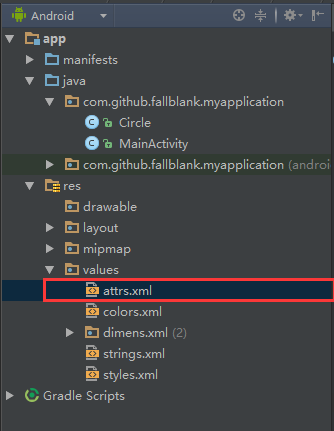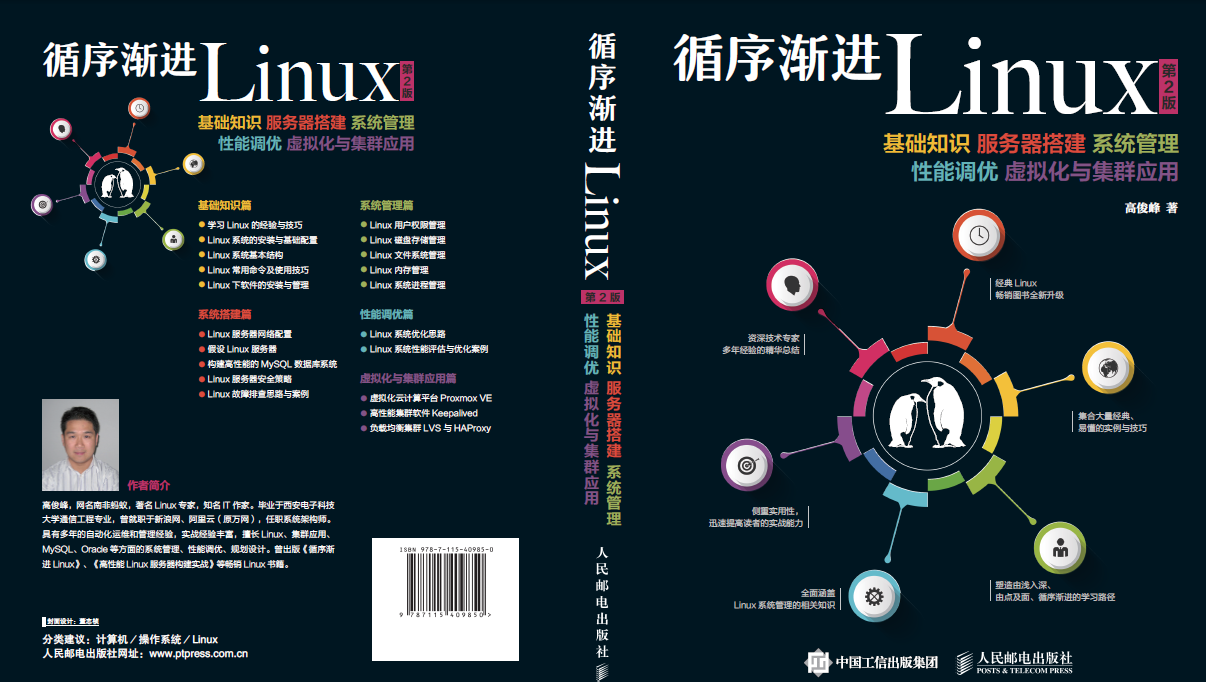編輯:關於android開發
線程通信、ActivityThread及Thread類是理解Android線程管理的關鍵。
線程,作為CPU調度資源的基本單位,在Android等針對嵌入式設備的操作系統中,有著非常重要和基礎的作用。本小節主要從以下三個方面進行分析:
ActivityThread是Android應用的主線程(UI線程),說起ActivityThread,不得不提到Activity的創建、啟動過程以及ActivityManagerService,但本文將僅從線程管理的角度來分析ActivityThread。ActivityManagerService、ActivityStack、ApplicationThread等會在後續文章中詳細分析,敬請期待喔~~不過為了說清楚ActivityThread的由來,還是需要簡單介紹下。
以下引用自羅升陽大師的博客:《Android應用程序的Activity啟動過程簡要介紹和學習計劃》
Step 1. 無論是通過Launcher來啟動Activity,還是通過Activity內部調用startActivity接口來啟動新的Activity,都通過Binder進程間通信進入到ActivityManagerService進程中,並且調用ActivityManagerService.startActivity接口;
Step 2. ActivityManagerService調用ActivityStack.startActivityMayWait來做准備要啟動的Activity的相關信息;
Step 3. ActivityStack通知ApplicationThread要進行Activity啟動調度了,這裡的ApplicationThread代表的是調用ActivityManagerService.startActivity接口的進程,對於通過點擊應用程序圖標的情景來說,這個進程就是Launcher了,而對於通過在Activity內部調用startActivity的情景來說,這個進程就是這個Activity所在的進程了;
Step 4. ApplicationThread不執行真正的啟動操作,它通過調用ActivityManagerService.activityPaused接口進入到ActivityManagerService進程中,看看是否需要創建新的進程來啟動Activity;
Step 5. 對於通過點擊應用程序圖標來啟動Activity的情景來說,ActivityManagerService在這一步中,會調用startProcessLocked來創建一個新的進程,而對於通過在Activity內部調用startActivity來啟動新的Activity來說,這一步是不需要執行的,因為新的Activity就在原來的Activity所在的進程中進行啟動;
Step 6. ActivityManagerServic調用ApplicationThread.scheduleLaunchActivity接口,通知相應的進程執行啟動Activity的操作;
Step 7. ApplicationThread把這個啟動Activity的操作轉發給ActivityThread,ActivityThread通過ClassLoader導入相應的Activity類,然後把它啟動起來。
大師的這段描述把ActivityManagerService、ActivityStack、ApplicationThread及ActivityThread的調用關系講的很清楚,本文將從ActivityThread的main()方法開始分析其主要工作及實現機制。
ActivityThread源碼來自:https://github.com/android/platform_frameworks_base/blob/master/core/java/android/app/ActivityThread.java
public static void main(String[] args) {
Trace.traceBegin(Trace.TRACE_TAG_ACTIVITY_MANAGER, "ActivityThreadMain");
SamplingProfilerIntegration.start();
// CloseGuard defaults to true and can be quite spammy. We
// disable it here, but selectively enable it later (via
// StrictMode) on debug builds, but using DropBox, not logs.
CloseGuard.setEnabled(false);
Environment.initForCurrentUser();
// Set the reporter for event logging in libcore
EventLogger.setReporter(new EventLoggingReporter());
AndroidKeyStoreProvider.install();
// Make sure TrustedCertificateStore looks in the right place for CA certificates
final File configDir = Environment.getUserConfigDirectory(UserHandle.myUserId());
TrustedCertificateStore.setDefaultUserDirectory(configDir);
Process.setArgV0("<pre-initialized>");
Looper.prepareMainLooper();
ActivityThread thread = new ActivityThread();
thread.attach(false);
if (sMainThreadHandler == null) {
sMainThreadHandler = thread.getHandler();
}
if (false) {
Looper.myLooper().setMessageLogging(new
LogPrinter(Log.DEBUG, "ActivityThread"));
}
// End of event ActivityThreadMain.
Trace.traceEnd(Trace.TRACE_TAG_ACTIVITY_MANAGER);
Looper.loop();
throw new RuntimeException("Main thread loop unexpectedly exited");
}
上述代碼中,紅色部分之前的代碼主要用於環境初始化、AndroidKeyStoreProvider安裝等,這裡不做重點說明。紅色部分的代碼主要分為兩個功能塊:1)綁定應用進程到ActivityManagerService;2)主線程Handler消息處理。
關於線程通信機制,Handler、MessageQueue、Message及Looper四者的關系請參考上一篇文章《Android線程管理——線程通信》。
main()方法通過thread.attach(false)綁定應用進程。ActivityManagerNative通過getDefault()方法返回ActivityManagerService實例,ActivityManagerService通過attachApplication將ApplicationThread對象綁定到ActivityManagerService,而ApplicationThread作為Binder實現ActivityManagerService對應用進程的通信和控制。
private void attach(boolean system) {
sCurrentActivityThread = this;
mSystemThread = system;
if (!system) {
…… RuntimeInit.setApplicationObject(mAppThread.asBinder());
final IActivityManager mgr = ActivityManagerNative.getDefault();
try {
mgr.attachApplication(mAppThread);
} catch (RemoteException ex) {
// Ignore
}
…… } else {
……
}
}
在ActivityManagerService內部,attachApplication實際是通過調用attachApplicationLocked實現的,這裡采用了synchronized關鍵字保證同步。
@Override
public final void attachApplication(IApplicationThread thread) {
synchronized (this) {
int callingPid = Binder.getCallingPid();
final long origId = Binder.clearCallingIdentity();
attachApplicationLocked(thread, callingPid);
Binder.restoreCallingIdentity(origId);
}
}
attachApplicationLocked的實現較為復雜,其主要功能分為兩部分:
thread.bindApplication
mStackSupervisor.attachApplicationLocked(app)
private final boolean attachApplicationLocked(IApplicationThread thread,
int pid) {
// Find the application record that is being attached... either via
// the pid if we are running in multiple processes, or just pull the
// next app record if we are emulating process with anonymous threads.
ProcessRecord app;
if (pid != MY_PID && pid >= 0) {
synchronized (mPidsSelfLocked) {
app = mPidsSelfLocked.get(pid);
}
} else {
app = null;
}
// ……
try {
// ……
thread.bindApplication(processName, appInfo, providers, app.instrumentationClass,
profilerInfo, app.instrumentationArguments, app.instrumentationWatcher,
app.instrumentationUiAutomationConnection, testMode, enableOpenGlTrace,
enableTrackAllocation, isRestrictedBackupMode || !normalMode, app.persistent,
new Configuration(mConfiguration), app.compat,
getCommonServicesLocked(app.isolated),
mCoreSettingsObserver.getCoreSettingsLocked());
updateLruProcessLocked(app, false, null);
app.lastRequestedGc = app.lastLowMemory = SystemClock.uptimeMillis();
} catch (Exception e) {
// todo: Yikes! What should we do? For now we will try to
// start another process, but that could easily get us in
// an infinite loop of restarting processes...
Slog.wtf(TAG, "Exception thrown during bind of " + app, e);
app.resetPackageList(mProcessStats);
app.unlinkDeathRecipient();
startProcessLocked(app, "bind fail", processName);
return false;
}
// See if the top visible activity is waiting to run in this process...
if (normalMode) {
try {
if (mStackSupervisor.attachApplicationLocked(app)) {
didSomething = true;
}
} catch (Exception e) {
Slog.wtf(TAG, "Exception thrown launching activities in " + app, e);
badApp = true;
}
}
// ……
}
thread對象其實是ActivityThread裡ApplicationThread對象在ActivityManagerService的代理對象,故此執行thread.bindApplication,最終會調用ApplicationThread的bindApplication方法。該bindApplication方法的實質是通過向ActivityThread的消息隊列發送BIND_APPLICATION消息,消息的處理調用handleBindApplication方法,handleBindApplication方法比較重要的是會調用如下方法:
mInstrumentation.callApplicationOnCreate(app);
callApplicationOnCreate即調用應用程序Application的onCreate()方法,說明Application的onCreate()方法會比所有activity的onCreate()方法先調用。
mStackSupervisor為ActivityManagerService的成員變量,類型為ActivityStackSupervisor。
/** Run all ActivityStacks through this */ ActivityStackSupervisor mStackSupervisor;
從注釋可以看出,mStackSupervisor為Activity堆棧管理輔助類實例。ActivityStackSupervisor的attachApplicationLocked()方法的調用了realStartActivityLocked()方法,在realStartActivityLocked()方法中,會調用scheduleLaunchActivity()方法:
final boolean realStartActivityLocked(ActivityRecord r,
ProcessRecord app, boolean andResume, boolean checkConfig)
throws RemoteException {
//...
try {
//...
app.thread.scheduleLaunchActivity(new Intent(r.intent), r.appToken,
System.identityHashCode(r), r.info,
new Configuration(mService.mConfiguration),
r.compat, r.icicle, results, newIntents, !andResume,
mService.isNextTransitionForward(), profileFile, profileFd,
profileAutoStop);
//...
} catch (RemoteException e) {
//...
}
//...
return true;
}
app.thread也是ApplicationThread對象在ActivityManagerService的一個代理對象,最終會調用ApplicationThread的scheduleLaunchActivity方法。
// we use token to identify this activity without having to send the
// activity itself back to the activity manager. (matters more with ipc)
@Override
public final void scheduleLaunchActivity(Intent intent, IBinder token, int ident,
ActivityInfo info, Configuration curConfig, Configuration overrideConfig,
CompatibilityInfo compatInfo, String referrer, IVoiceInteractor voiceInteractor,
int procState, Bundle state, PersistableBundle persistentState,
List<ResultInfo> pendingResults, List<ReferrerIntent> pendingNewIntents,
boolean notResumed, boolean isForward, ProfilerInfo profilerInfo) {
updateProcessState(procState, false);
ActivityClientRecord r = new ActivityClientRecord();
……
sendMessage(H.LAUNCH_ACTIVITY, r);
}
同bindApplication()方法,最終是通過向ActivityThread的消息隊列發送消息,在ActivityThread完成實際的LAUNCH_ACTIVITY的操作。
public void handleMessage(Message msg) {
if (DEBUG_MESSAGES) Slog.v(TAG, ">>> handling: " + codeToString(msg.what));
switch (msg.what) {
case LAUNCH_ACTIVITY: {
Trace.traceBegin(Trace.TRACE_TAG_ACTIVITY_MANAGER, "activityStart");
final ActivityClientRecord r = (ActivityClientRecord) msg.obj;
r.packageInfo = getPackageInfoNoCheck(
r.activityInfo.applicationInfo, r.compatInfo);
handleLaunchActivity(r, null);
Trace.traceEnd(Trace.TRACE_TAG_ACTIVITY_MANAGER);
} break;
……
}
handleLaunchActivity()用於啟動Activity。具體的啟動流程不在這裡詳述了,這裡重點說明ApplicationThread及ActivityThread的線程通信機制。
在《Android線程管理——線程通信》中談到了普通線程中Handler、MessageQueue、Message及Looper四者的關系,那麼,ActivityThread中的線程通信又有什麼不同呢?不同之處主要表現為兩點:1)Looper的初始化方式;2)Handler生成。
首先,ActivityThread通過Looper.prepareMainLooper()初始化Looper,為了直觀比較ActivityThread與普通線程初始化Looper的區別,把兩種初始化方法放在一起:
/** Initialize the current thread as a looper.
* This gives you a chance to create handlers that then reference
* this looper, before actually starting the loop. Be sure to call
* {@link #loop()} after calling this method, and end it by calling
* {@link #quit()}.
*/
public static void prepare() {
prepare(true);
}
private static void prepare(boolean quitAllowed) {
if (sThreadLocal.get() != null) {
throw new RuntimeException("Only one Looper may be created per thread");
}
sThreadLocal.set(new Looper(quitAllowed));
}
/**
* Initialize the current thread as a looper, marking it as an
* application's main looper. The main looper for your application
* is created by the Android environment, so you should never need
* to call this function yourself. See also: {@link #prepare()}
*/
public static void prepareMainLooper() {
prepare(false);
synchronized (Looper.class) {
if (sMainLooper != null) {
throw new IllegalStateException("The main Looper has already been prepared.");
}
sMainLooper = myLooper();
}
}
/**
* Return the Looper object associated with the current thread. Returns
* null if the calling thread is not associated with a Looper.
*/
public static Looper myLooper() {
return sThreadLocal.get();
}
/** Returns the application's main looper, which lives in the main thread of the application.
*/
public static Looper getMainLooper() {
synchronized (Looper.class) {
return sMainLooper;
}
}
其次,ActivityThread與普通線程的Handler生成方式也不一樣。普通線程生成一個與Looper綁定的Handler即可,ActivityThread通過sMainThreadHandler指向getHandler()的返回值,而getHandler()方法返回的其實是一個繼承Handler的H對象。。
private class H extends Handler {
……
}
final H mH = new H();
final Handler getHandler() {
return mH;
}
真正實現消息機制“通”信的其實是Looper的loop()方法,loop()方法的核心實現如下:
/**
* Run the message queue in this thread. Be sure to call
* {@link #quit()} to end the loop.
*/
public static void loop() {
final Looper me = myLooper();
if (me == null) {
throw new RuntimeException("No Looper; Looper.prepare() wasn't called on this thread.");
}
final MessageQueue queue = me.mQueue;
// Make sure the identity of this thread is that of the local process,
// and keep track of what that identity token actually is.
Binder.clearCallingIdentity();
final long ident = Binder.clearCallingIdentity();
for (;;) {
Message msg = queue.next(); // might block
if (msg == null) {
// No message indicates that the message queue is quitting.
return;
}
// This must be in a local variable, in case a UI event sets the logger
Printer logging = me.mLogging;
if (logging != null) {
logging.println(">>>>> Dispatching to " + msg.target + " " +
msg.callback + ": " + msg.what);
}
msg.target.dispatchMessage(msg);
if (logging != null) {
logging.println("<<<<< Finished to " + msg.target + " " + msg.callback);
}
// Make sure that during the course of dispatching the
// identity of the thread wasn't corrupted.
final long newIdent = Binder.clearCallingIdentity();
if (ident != newIdent) {
Log.wtf(TAG, "Thread identity changed from 0x"
+ Long.toHexString(ident) + " to 0x"
+ Long.toHexString(newIdent) + " while dispatching to "
+ msg.target.getClass().getName() + " "
+ msg.callback + " what=" + msg.what);
}
msg.recycle();
}
}
大致流程如下:
 Android自定義View入門(一),androidview
Android自定義View入門(一),androidview
Android自定義View入門(一),androidview最近在寫一個關於音樂播放的應用,寫到播放界面UI時,就想自己實現的一個播放界面。那麼如何實現自定義View呢
 用Apktool獲取別人APP中的圖片及布局資源進行學習
用Apktool獲取別人APP中的圖片及布局資源進行學習
用Apktool獲取別人APP中的圖片及布局資源進行學習 當我們看到一款UI布局很漂亮的APP,想要了解別人是怎麼實現的時候,就可以通過Apktool工具來反編譯別人
 Android自定義控件之動態柱狀圖
Android自定義控件之動態柱狀圖
Android自定義控件之動態柱狀圖 設計思路: 1.畫柱狀圖 2.畫豎線 3.畫頂部橫線 4.畫文字 1.畫柱狀圖 畫柱狀圖的方法很簡單,就是使用canvas.dra
 《循序漸進Linux》第二版即將出版發行(附封面)
《循序漸進Linux》第二版即將出版發行(附封面)
《循序漸進Linux》第二版即將出版發行(附封面)從《循序漸進Linux》第一版發布,到現在已經近6年了,6年的時間,技術發生了很大的變化,Linux系統的內核版本從2.